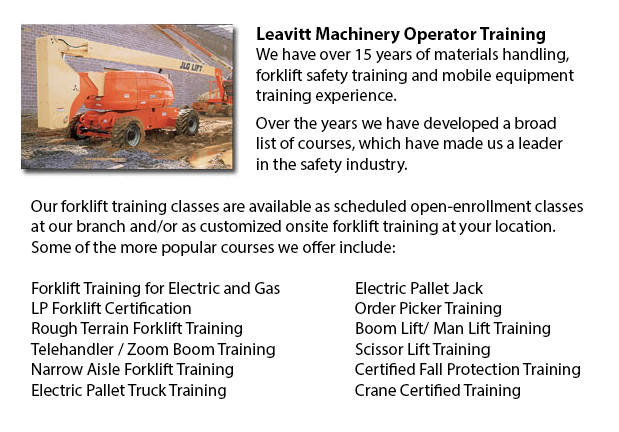
Prince George Aerial Lift Certification - Aerial Lift Certification is for personnel who require a thorough knowledge of aerial lift safety. Supervisors, maintenance workers and construction craftsmen require this training to make certain that operators and inspectors are qualified. Federal, provincial and state regulations require businesses to be certified in order to carry out in-house aerial lift inspections.
Nearly all workers who are required to work at elevated level would usually utilize the same means to get to these required heights, regardless of the kind of work that has to be done. Scissor lifts and aerial lifts are the mechanized devices used to lift workers and equipment to elevated worksites.
Bucket trucks known as Cherry Pickers are aerial platforms which feature a bucket and supported boom. The main hazard to making use of this kind of platform is usually tip-overs, falls and electrocutions. Certification guarantees that workers who use aerial lifts are trained correctly to be able to safely work the machine. Training also makes certain that workers know how to maintain aerial work platforms based on the manufacturer's directions.
Training covers the following lifts: Vehicle-mounted aerial lifts, Boom-supported aerial lifts and scissors lifts. Trainees will gain knowledge of the causes and results of aerial lift incidents, and will learn safe operating procedures. They will be technically competent in the different kinds of aerial lifts, in addition to components and terms. From selecting the best aerial lift for the task to interpreting rated capacity charts, the certification program would provide employees with all that they must know to carry out their work safely.
Inspectors and supervisors who have the responsibility to inspect aerial lift machines should know how to inspect gears, booms, structural parts, operating mechanisms, functions and control systems, braking systems, power plants, pins and shafts, attachments, hydraulic, pneumatic and electric parts, emergency safety devices and operator aids, and so on. Training would consist of the following: the role of the inspector in lessening liability exposure and accidents; annual and monthly check; how to perform a pre-use; how to write inspection reports; how to apply and interpret regulations regarding aerial lift safety standards; techniques and checklists; inspection procedures; following record keeping requirements; understanding and applying the three levels of aerial lift inspection; and when to remove defective aerial lifts from service.
-
Prince George Telehandler Operator Training
Prince George Telehandler Operator Training - Telehandler forklifts or Telescopic Handler forklifts are common industrial machines found in various construction industry settings. The telehandler is a useful machinery and makes for a valuable tool wh... More -
Skid Steer Loader Certification in Prince George
The engine powered skid-steer loader comprises a small and rigid frame, equipped with lift arms that could attach to many industrial attachments and tools to execute several labor saving tasks. Normally, skid-steer loaders are four-wheel drive vehicl... More -
Prince George Telehandler License
Prince George Telehandler License - The telescopic handler or telehandler is a generally utilized machine in agricultural and industrial applications. This machine is the same in look to a forklift and also works in a similar manner, although telehan... More -
Prince George Manlift Ticket
Prince George Manlift Ticket - The Elevated Platforms and Manlifts Certification course helps to provide the needed training on the work practices, safe operating procedures, rules and regulations regarding the everyday activities for the operators o... More -
Prince George Manlift Operator Training
Prince George Manlift Operator Training - A specialized kind of hydraulic platform is referred to as an aerial lift or a man lift. It is designed to hoist an individual vertically up and down and thus, is likewise called a vertical personnel lift. Th... More -
Prince George Forklift Safety Training
Prince George Forklift Safety Training - Individuals wanting work in industries that utilize forklifts have to undergo a forklift safety training course prior to becoming a certified operator of a lift truck. There are many ways to go about obtaining... More -
Prince George Boom Lift Certification
Prince George Boom Lift Certification - The use o elevated work platforms allow for maintenance operations and work to be performed at elevated work heights which were otherwise unreachable. Workers making use of boom lifts and scissor lifts could be... More -
Prince George Crane Training Schools
Prince George Crane Training Schools - We have designed various programs for Mobile Crane Operation at our Crane Training Schools. These programs are recommended for the skilled operator who needs certification or re-certification, and for inexperien... More

Forklift Certification Prince George
TOLL FREE: 1-888-254-6157
Prince George, British Columbia
forkliftcertificationprincegeorge.com
Email Us
About Us


